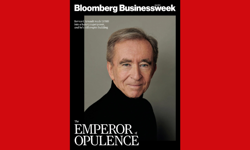Consumers’ relationship with newspapers and magazines is not, strange as it may seem, all that far away from their relationship with their favourite fizzy drink. With drinks, regardless of where people are, they want – and get – the same recipe, the same quality, taste, instantly recognisable packaging, and the same promise of refreshment. And so it ought to be with a publishing brand, irrespective of whether they’re reclining on the sofa at home or surrounded by strangers and standing up on the Tube. Consumers want to be able to relate to their preferred publishing brands on whatever device they have handy, sometimes using several at once. And while on the one hand, they want published content to be tailored to the size and capabilities of their device, they also want a consumer experience that’s not too different from what the brand provides them in print and on every other device they might use, with their favourite columns, pic of the week and competition results where they expect to find them.
The scale of the challenge
The problem for publishers is that, in the absence so far of a single piece of software that can adapt everything for every device in a way that they’re satisfied with – not simply resizing so everything fits on the screen - every new device available to consumers potentially means a redesign every time there’s a new issue or even a new piece of content to be added. And no one can afford to design every single page for every orientation on every device.
Many publishers are coy about discussing how they get around the technical hurdles to producing the best possible product in all possible formats. There are, inevitably, compromises being made in the quest for the best and most efficient results. For those that are happy to share, it seems that investing in the right resources has been not just about forging the right partnerships with technology suppliers but often building the systems they want themselves.
“If you see ‘make it once, read it everywhere’ that will almost inherently be a very basic offering,” says Mike Goldsmith, Editor-in-Chief, Digital Editions, at Future Publishing. Resizing pages is only a small part of device optimisation. Readers can be segmented to an extent according to the device they’re on given the huge price difference between the top and bottom end of the tech market. There are also other fundamental differences in capacity between, say, the latest iPad, a clunky tablet, a Kindle, a cheap phone and a high-end phone. Often they have different video player, different functions, and different processing power. So, the text may be readable on the screen without requiring any annoying scrolling across, but getting right the most engaging aspects of content – pictures, video and interactive elements – is a harder task, and one that is all the more important to achieve given that the readers that delve deepest are those most likely to subscribe.
Goldsmith says there is, necessarily, a trade-off when it comes to the allocation of resources across different platforms which, in a way, isn’t all that new. “As much as we would like it to be absolutely brilliant everywhere, it’s a bit like painting the Forth Bridge.” The top 10 devices – those that attract the most readers for each title, and the most valuable audiences - are prioritised, as are the key touchpoints, the things that show up in analytics as the elements audiences really love. This is especially important as revenue from digital formats grows and, for most publishers, that from print continues to slip, and as they enter international markets with digital products aimed at audiences less familiar with print editions.
“If you think of those devices like shops, it’s much like print,” says Goldsmith. “You want to be everywhere, but you’re going to spend more time working with WHSmith than the corner store, no disrespect to the corner store.”
At Dennis Publishing, Chief Technology Officer Paul Lomax says the right way to organise workflows means deciding exactly what it is each title is setting out to achieve. “The key is separating the content from the presentation. When it comes to this multi-device universe we now live in, the presentation is definitely changing … there’s no whizzy software that will do it all, especially if you’re starting in something like InDesign,” he says. “There is an extra workflow, and if you can’t afford to put in a little extra effort to have a production person take the stuff from print to digital CMS, changing copy or adding pictures, you may as well just do a PDF.”
Tech studies
Several publishers have become software developers because what they wanted wasn’t available off the peg. Future Publishing quickly saw that there was huge consumer demand for content on iPads, and much higher revenues than for content delivered to computers. But as technology moved one, Goldsmith says tech providers weren’t providing the flexibility that the publisher needed. “The things we wanted those platforms to do weren’t on their roadmap,” he says. “A lot of platforms at the time were saying you had to decide: interactive or flat.” Future wanted to be able to try a flat replica of a print edition, experiment with interactivity and see how consumers responded and then either ramp up interactivity or return to a flat edition – without any interruption to service for subscribers. “It was safer to get a flag in the ground and then decide. If you’re master of your own destiny, it’s easier to do things.”
The publishing platform Future has developed, FutureFolio, enables the company to publish digital replicas of print editions – flat PDFs – and interactive editions that can take YouTube videos, and live updates via RSS feeds. The extent to which each edition is adjusted depends on which devices are most popular for each edition and where the most loyal users are; about 80 per cent of content goes in all editions, and the rest is adjusted according to screen size and dwell time on different features – like photo galleries – on different devices.
Dennis Publishing, which produces the Week, Men's Fitness and Auto Express, has invested in London-based app software start-up Padify, which allows designers to create page layouts suitable for a range of devices. Content in Padify is rotated with the device, and allows social sharing, bookmarking and copying text, with readers able to save stories or features. Padify also allows apps to be developed that are not based on template layouts; templates are ideal for some titles, but others benefit from greater flexibility and tailoring.
Lomax says there has to be a focus of resources on the devices that are most widely used and are most lucrative. “If you know that 80 per cent of people are on iPad, you optimise for iPad,” he says.
Martin Belam runs the digital consultancy Emblem, and used to be Head of User Experience for the Guardian. Publishers’ current focus on Apple devices is logical. “I think Android has two disadvantages for publishers compared to iOS,” he says. “The fragmented device base and having lots of different versions of Android available concurrently makes developing and testing for Android much harder. We’ve found that with trying to be mobile first … (content) can be whipped into shape for desktop and iOS pretty quickly. Getting it to work reliably across the plethora of Android platforms takes a little more effort. And at the moment for publishers, the second problem is that the revenue just doesn’t seem to be there for them. Even though there are a lot of Android tablets on the market, app sales seem to be taking a while to pick up. Higher levels of piracy on Android may also be contributing to this lack of ROI for publishers on the platform.”
Lomax says Dennis invests much of its energy developing templates for different devices, taking account of the different real estate on each device, and the optimal positions for pictures and videos. Video, he says, is incredibly popular, even on small screens. “Video usage on iPhone is very, very high, and it’s mainly on the sofa in front of the TV when their partner is watching something else. The key with designing for different devices is not to make assumptions about what people want based on the device they’re using. Anybody who says ‘design for someone who’s waiting for a bus’ should be ignored, because chances are they’re not waiting for a bus at all.”
Haymarket, meanwhile, built its new, device-sensitive and territory-sensitive website for gadget magazine Stuff in-house, using an open-source content management system. It enables the company to rapidly launch the new Stuff.tv site into international markets, some of which are existing print territories and some of which are new for the brand. The “responsive” layout delivers an optimised version of the product to consumers on whichever device they use, and for advertising clients, means clearer ad placements.
Starting from scratch
Not just restructuring and reorganising but rethinking what’s required early on in the creation of each piece of content, affecting workflows further along the production chain.
Belam says there’s an illusion at play; that people think publishers never used to need to “tinker” with every issue of printed products. “Every day, newspapers print various physical proofs to check things are ‘just so’ before they go to press,” he says. “One of the problems with digital from an editorial point of view is that it gives an illusion of great flexibility, without really conveying what the constraints are. An editor knows she can’t suddenly switch a few pages to be die-cut in a different paper-size, because the presses don’t physically handle it. “I want it blue, and to behave like site x does” is much easier to say, because of a lack of understanding of how complex these systems really are under the surface. The key to a great content management system is really understanding firstly the workflow of the business and, secondly, understanding the model of the content very well – what exactly are the chunks of content that we need to make this work across all platforms.”
Lomax says publishing across so many platforms requires a mindset change throughout the chain right from the point of commissioning and assigning stories. “The key is how you create content,” he says.” If you’re moving towards digital first, at the point of writing and subbing and picking the photos, you’re not just picking one photo for print, you’re also picking an extra five and a video for digital.” For a workout series in Men’s Fitness, for instance, this has traditionally been shot with the double-page spread in mind. Those pictures are still needed, but also extra photos that can be used in landscape, portrait and square for different layouts on different devices. Photographers have to get into the habit of cropping not with the lens but afterwards, on a screen. Likewise, the computer shopping title Expert Reviews, which used to require extra copy to be added to print stories for the web, is now writing long copy first, for digital, where there are ten times as many readers as in print (and 50 per cent of revenues), then adjusting print layouts to take new copy lengths.
“It’s taken a while to get there,” says Lomax. “It’s about getting people to think in a multi-platform way.”












